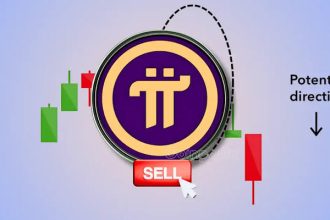Recently, we have attempted to draw analogies between the Pi Network and other blockchain projects, including the Bitcoin, Core DAO, and Star Network blockchains. We’ll examine some differences between Ethereum and Pi Network today.
The whole of cryptocurrency industry is anxiously awaiting the launch of the Pi Network’s open Mainnet which is speculated to happen soon maybe on Pi day (March 14th). Nicolas Kokkalis and Chengdiao Fan are famous names when talking about Pi Network just as Vitalik Buterin is whenever Ethereum comes into the picture.
We have tried to highlight some of the possible differences between the two projects as follows:
1. The native token of the Pi Network is PiCoin (Pi) while Ethereum’s native token is Ether (ETH).
2. Both are digital assets that are traded on online exchanges and kept in different kinds of cryptocurrency wallets.
3. Distributed ledger technology and cryptography underpin both the Pi Network and Ethereum networks.
4. Before the Merge upgrade, in 2022, Ethereum’s annual energy consumption ranged from 46.31 terawatt hours (TWh) to 93.98 TWh. Because Pi Network is easy to use and consumes minimal energy, it is mined not just on desktop computers but also on smartphones.
5. Unlike Pi, which can be done with a smartphone, Ethereum requires pricey mining equipment.
What is Pi Network?
Due to the centralization of first-generation cryptocurrencies like Bitcoin (BTC), many regular people are no longer able to mine them. Pi Network is a cryptocurrency initiative that aims to keep mining accessible.
The Pi Network, developed by a group of Stanford University alumni, allows users to mine PI cryptocurrency tokens using desktop and mobile phone apps by validating transactions on a distributed ledger.
What is Ethereum?
Ethereum is a blockchain-based computing platform that gives programmers the ability to create and deploy decentralized apps, which are those that are not controlled by a single entity. You can design a decentralized application where the decision-making authority resides with the application’s users.
Smart contracts are computer protocols that make the negotiation and execution of an agreement easier, more accurate, or more enforceable. A smart contract could, for example, be used to simulate the logic of a legal contract’s provisions or a financial contract that specifies counterparties’ obligations and automated value flows.
A smart contract is essentially what you would expect it to be: an automatically carrying out, programmed agreement that is stored on the Ethereum blockchain. It operates using an if, then logic, meaning that if x happens, then y happens.












